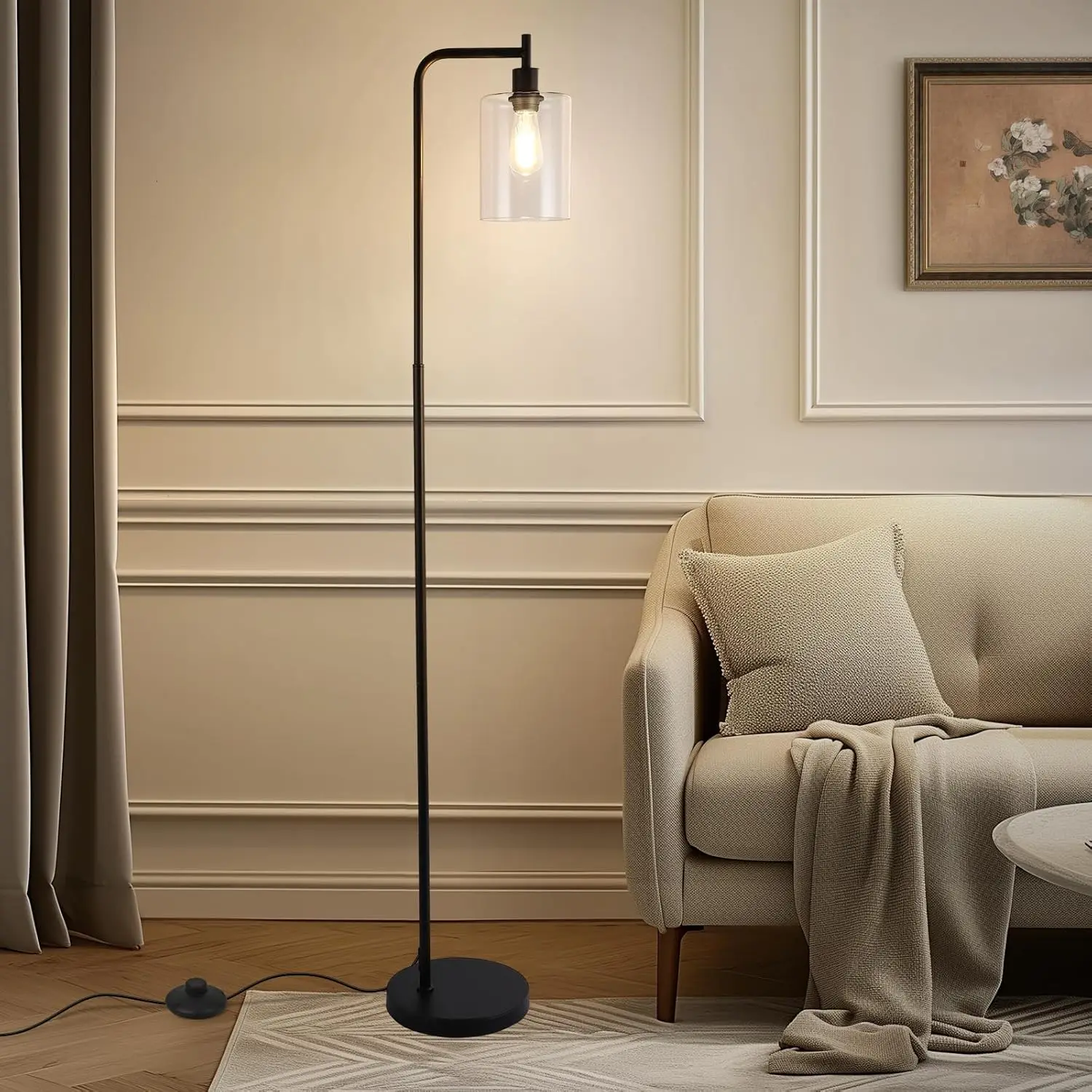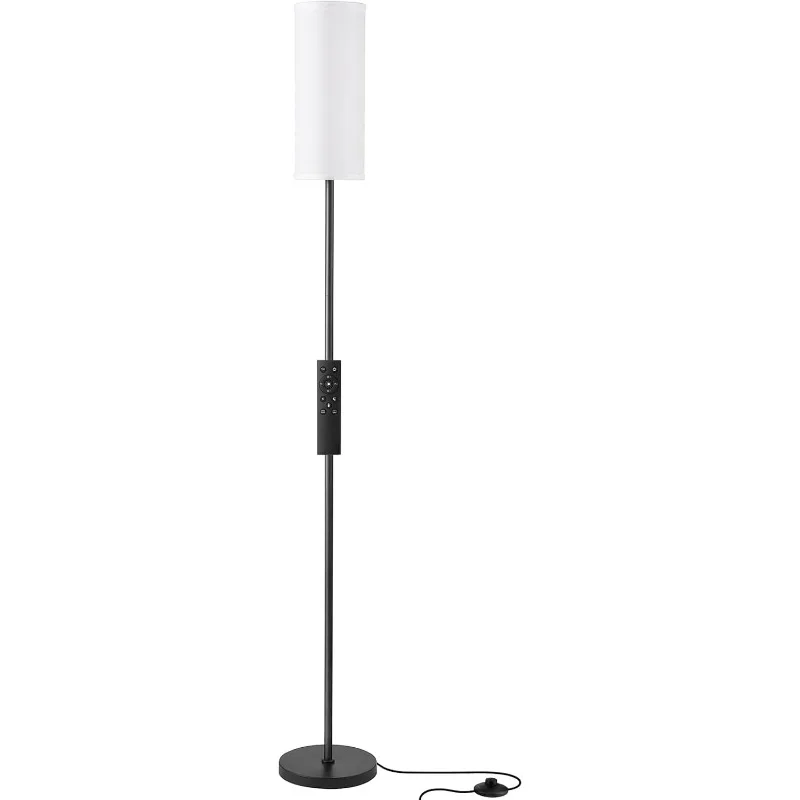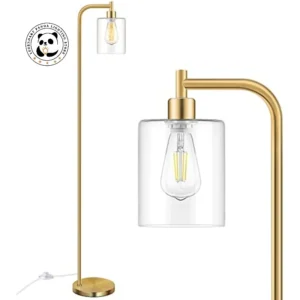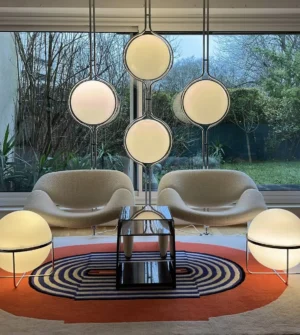Introduction: Understanding Modern Arc Lighting
Yes, arc lighting is still used today, but not in the form most people might imagine. Traditional carbon arc lamps that once illuminated city streets in the late 1800s and early 1900s have largely disappeared from general use. However, the fundamental principle of creating light using an electric arc between electrodes continues to thrive in numerous modern lighting technologies.
In today’s context, “arc lighting” refers more broadly to various gas discharge lamps where light is produced by an electric arc passing through a gas-filled environment, rather than the original open-air carbon electrode designs. This technological evolution has allowed the core concepts of arc lighting to remain relevant and widely used in specialized applications around the world.
The modern evolution of dimmable arc lighting represents a significant transformation from those early systems. While most people may not realize it, many common lighting technologies—from the fluorescent tubes in office buildings to high-intensity discharge lamps illuminating sports stadiums—actually operate on principles directly descended from those first arc lamps.
This technological evolution presents a fascinating story of how a revolutionary 19th-century innovation has adapted and transformed to remain relevant in our modern world, even as newer technologies like LED lighting gain prominence.
The Historical Significance of Traditional Carbon Arc Lamps
The story of arc lighting begins in 1809 when British scientist Humphry Davy demonstrated the first electric arc between two carbon rods. However, it would take several more decades before practical arc lighting systems emerged for public use. By the 1870s, cities around the world began installing carbon arc street lamps, transforming urban nightscapes in ways that were previously unimaginable.
These early carbon arc lamps represented the first practical electric lighting technology, predating even Thomas Edison’s incandescent bulb. Their brilliant white light revolutionized public spaces, extending productive hours and changing how people experienced cities after dark. Paris, which embraced this technology extensively, earned its nickname “The City of Light” partly due to its early adoption of arc lighting.
Beyond street lighting, carbon arc lamps found crucial applications in various industries:
- Theater and cinema projection, where their intense brightness could illuminate large screens
- Powerful searchlights for military applications, lighthouses, and maritime navigation
- Early photography and filmmaking studios, where the bright, daylight-like illumination was essential for capturing images
- Industrial settings requiring intense illumination for precision work
The timeless appeal of arc lamp designs continues to influence modern lighting, even as the technology itself has evolved dramatically. Early Hollywood film studios depended heavily on carbon arc lamps for their productions, with the distinctive harsh white light becoming a signature look of early cinema.
These pioneering systems laid the foundation for electric lighting as we know it today, despite their eventual replacement by more efficient and practical technologies.
Why Traditional Carbon Arc Lamps Became Obsolete
Despite their revolutionary impact, traditional carbon arc lamps suffered from numerous practical limitations that eventually led to their obsolescence:
Intensive maintenance requirements: Carbon electrodes would continuously burn away during operation, requiring frequent replacement—typically every 8-14 hours in early systems. Lamp operators needed to regularly adjust the electrode gap to maintain the arc.
Significant operational challenges: Carbon arc lamps produced substantial carbon dust that would accumulate on nearby surfaces. They also generated considerable noise and an unstable flickering light that could be distracting or unsuitable for many applications.
Serious safety concerns: The open flame design presented fire hazards, while the intense light produced harmful ultraviolet radiation. Additionally, the arc process generated ozone gas, which could be irritating or harmful in enclosed spaces.
Light quality limitations: While extremely bright, carbon arc lamps produced a harsh light with poor color rendering compared to later technologies. The light was difficult to control and direct efficiently.
Inefficiency and cost factors: The system wasted significant energy as heat, and the continuous replacement of carbon electrodes made operating costs substantial compared to emerging alternatives.
By the early 20th century, incandescent bulbs had already begun replacing arc lamps for general illumination. The development of fluorescent lighting in the 1930s further accelerated this transition. By the mid-20th century, more advanced gas discharge lamps had largely taken over the remaining applications where arc lighting was still used.
Modern lighting technologies offer significant advantages in creating ambiance with dimmable options, something that was impossible with traditional carbon arc systems. This evolution in both technology and user experience explains why the original carbon arc lamps have disappeared from general use.
The Fundamental Science: How Arc Lighting Works
At its core, all arc lighting—both historical and modern—relies on the same basic principle: an electric current passing through a gas to create a plasma that emits light. This process begins when a high voltage creates a path of ionized gas (plasma) between two electrodes. Once established, this plasma channel conducts electricity while simultaneously emitting light.
The science behind this process is fascinating. When electrons flow through the gas, they collide with gas atoms or molecules, exciting them to higher energy states. As these excited particles return to their ground state, they release energy in the form of photons—light we can see. The specific wavelengths (colors) produced depend on the gas or vapor used in the lamp.
Every arc lighting system requires three essential components:
Electrodes: These provide the entry and exit points for electrical current. Materials vary widely depending on the lamp type, from carbon rods in traditional lamps to specialized metal alloys in modern versions.
Gas medium: The space between electrodes contains specific gases or metal vapors that determine the light characteristics. Different gases produce different colors and intensities of light.
Ballast or power supply: This regulates current to the lamp and provides the initial high voltage needed to “strike” the arc. Without this regulation, the arc would quickly draw excessive current and destroy itself.
The temperatures achieved within arc lamps are remarkable—typically ranging from 5,000°F to 20,000°F (2,760°C to 11,093°C). These extreme temperatures explain both the intensity of the light produced and many of the practical challenges in managing arc lighting systems.
Understanding these fundamental principles helps explain why arc lighting technology has evolved rather than disappeared entirely. The basic concept remains valuable, but its implementation has transformed dramatically.
Modern Arc Lighting: Gas Discharge Lamp Technologies
The evolution from open carbon arc lamps to today’s sealed gas discharge systems represents one of the most significant technological transitions in lighting history. Modern arc lighting technologies maintain the basic principle of light generated by an electric arc, but they overcome nearly all the limitations that made carbon arc lamps impractical.
Today’s gas discharge lamps offer remarkable improvements:
- Electrode life measured in thousands of hours rather than mere hours
- Sealed environments that eliminate carbon dust, reduce noise, and contain harmful radiation
- Precisely formulated gas mixtures that produce specific light characteristics for different applications
- Dramatically improved efficiency, converting more electricity into useful light rather than wasted heat
- Significantly enhanced safety through enclosed designs and improved materials
These advantages come together under the category of High-Intensity Discharge (HID) lamps—the modern evolution of arc lighting technology. HID lamps produce light through an electrical arc between tungsten electrodes housed in a transparent tube filled with gas and metal salts. As the lamp warms up, the metal salts vaporize, enhancing light output and efficiency.
The efficiency improvements are particularly striking. While early carbon arc lamps might produce 2-6 lumens per watt, modern HID lamps can achieve 150 lumens per watt or higher—a 25-75 times improvement. This efficiency revolution helps explain why LED arc floor lamps have become so popular for home and office settings, combining the aesthetic appeal of the arc design with modern lighting technology.
This technological transition didn’t happen overnight but represented a gradual evolution through various specialized lamp types, each finding its own niche in modern lighting applications.
Xenon Arc Lamps: Cinema, Automotive and Specialized Applications
Xenon arc lamps represent one of the most successful and enduring modern arc lighting technologies. These lamps produce light by creating an arc through xenon gas under high pressure, resulting in a bright, white light with a spectrum remarkably similar to natural daylight. This makes xenon arc lamps particularly valuable in applications where accurate color reproduction matters.
Key technical characteristics include:
– Color temperature closely matching daylight (around 6000K)
– Excellent color rendering index (CRI), typically above 90
– Extremely high brightness from a relatively compact source
– The ability to start instantly at full brightness without warm-up time
These qualities have made xenon arc lamps the standard choice for several specialized applications:
Digital cinema projection remains one of the most widespread uses of xenon arc technology. Despite advances in LED and laser projection, most commercial movie theaters—including IMAX systems—still rely on xenon projector lamps for their combination of brightness, color accuracy, and cost-effectiveness.
Automotive lighting represents another major application, with high-intensity xenon headlights (often called HID headlights) appearing in many vehicles manufactured between the late 1990s and 2015. While LED headlights have gained significant market share in recent years, xenon systems remain common in many vehicles on the road today.
Scientific and medical equipment requiring precise light spectra also continue to rely on xenon arc technology, including microscope illuminators, endoscopic light sources, and spectrophotometers. These applications value the daylight-like spectrum that xenon uniquely provides.
Specialized entertainment lighting, particularly follow spots and high-powered searchlights, often still utilize xenon technology when maximum brightness is required from a relatively compact source.
Mercury Vapor and Fluorescent Lighting: The Common Arc Lamps
Perhaps the most ubiquitous form of arc lighting technology can be found in mercury vapor lamps, including the fluorescent tubes that have illuminated offices, schools, and commercial buildings for decades. Many people don’t realize that fluorescent lighting is actually a type of low-pressure mercury arc lamp.
Mercury vapor lamps work by passing an electric current through mercury vapor, producing ultraviolet light that causes a phosphor coating to fluoresce, emitting visible light. Traditional high-pressure mercury vapor lamps produce a distinctive blue-green light and were widely used for street lighting throughout much of the 20th century.
Today, mercury vapor technology continues to serve in several important applications:
- UV sterilization systems for water purification, air treatment, and medical equipment
- Specialized scientific applications requiring specific UV wavelengths
- Some industrial high-bay lighting installations where fixtures haven’t yet been upgraded
- Niche applications like reptile habitats that benefit from the specific light spectrum
However, it’s important to note that environmental concerns about mercury have led to the phase-out of many mercury-based lighting technologies in recent years. The Mercury Export Ban Act and similar regulations worldwide have accelerated the transition away from mercury vapor street lighting toward alternatives like metal halide, high-pressure sodium, and increasingly, LED systems.
Despite these regulatory challenges, the fundamental principle of generating light through a mercury arc remains important, particularly in the billions of fluorescent tubes still in use worldwide.
Metal Halide Lamps: Superior Color and Intensity
Metal halide lamps represent a significant advancement over basic mercury vapor technology by adding metal salts (halides) to the arc tube. These additional compounds vaporize during operation and contribute their own distinctive spectral lines, resulting in much improved color rendering and overall efficiency.
The key advantages of metal halide technology include:
– Excellent white light with balanced color spectrum
– Superior color rendering index (typically 65-95 CRI)
– High efficiency (70-115 lumens per watt)
– Relatively long life (10,000-20,000 hours)
These qualities have made metal halide lamps the standard choice for applications requiring both high light output and good color quality:
Sports stadiums and arenas worldwide rely on metal halide flood lighting systems that can illuminate vast playing fields with bright, uniform light that looks good on television broadcasts. While LED systems are making inroads in this market, metal halide remains common in many venues due to installation costs and established infrastructure.

Retail lighting, particularly in larger stores with high ceilings, has traditionally used metal halide technology for its ability to render product colors accurately while providing sufficient illumination from significant heights. The quality of light from dimmable arc floor lamps in home settings aims to recreate this pleasing light quality in a more controlled environment.
Horticulture and aquarium applications also frequently utilize specialized metal halide lamps. Plants benefit from the balanced spectrum for photosynthesis, while aquarium enthusiasts, particularly with reef tanks, value the penetrating light and color rendering that help showcase corals and fish.
Entertainment and stage lighting applications often include metal halide fixtures, particularly when high output and good color quality are required without the complexity of multiple LED sources.
High-Pressure Sodium: Efficient Outdoor Illumination
High-pressure sodium (HPS) lamps represent another specialized arc lighting technology that has dominated certain applications due to one remarkable characteristic: unmatched efficiency in producing visible light. These lamps generate their distinctive golden-yellow light by creating an arc through sodium vapor under high pressure.
Technical advantages of HPS technology include:
– Extraordinary efficiency (up to 140 lumens per watt)
– Exceptionally long operating life (24,000-36,000 hours)
– Excellent reliability under various weather conditions
– Lower operating costs compared to most alternatives
These characteristics made HPS lamps the dominant choice for street and highway lighting throughout the late 20th century and into the early 21st century. The distinctive amber glow of sodium vapor lamps remains visible in many cities worldwide, creating the characteristic yellow nighttime urban landscape familiar to most people.
Beyond street lighting, HPS technology continues to serve in:
– Security lighting for industrial facilities and storage yards
– Agricultural applications, particularly for supplemental greenhouse lighting
– Parking lots and large outdoor areas where efficiency is prioritized over color quality
However, the poor color rendering (typically CRI of 20-30) of HPS lighting represents its major drawback. The monochromatic yellow light makes color discrimination difficult, creating challenges for security cameras and human visual perception. This limitation has accelerated the transition to LED street lighting in many regions, though HPS remains widely deployed due to its established infrastructure and cost advantages.
Specialized Arc Lamps in Scientific and Industrial Applications
Beyond general illumination, numerous specialized arc lamp technologies continue to serve crucial roles in scientific research, industrial processes, and technical applications where their unique characteristics remain unmatched:
Deuterium arc lamps produce strong ultraviolet output used in UV-visible spectroscopy, an essential analytical technique in chemistry and materials science. Their stable UV emission provides the reference light source needed for precise absorption measurements.
Short-arc lamps create an extremely intense point source of light useful in specialized projection systems, microscopy illumination, and medical instruments. Their concentrated light output can be precisely focused for applications requiring maximum brightness in minimal space.
Krypton and other noble gas arc lamps generate specific wavelengths needed for laser pumping applications. These specialized lamps excite the gain medium in certain continuous-wave lasers, including those used for scientific research and industrial material processing.
Flash lamps produce intense pulses of light for photography, stroboscopic applications, and powering pulsed lasers. These specialized arc lamps can deliver enormous light energy in extremely short durations, making them irreplaceable for certain high-power applications.
The versatility of modern multi-light applications demonstrates how lighting technology has evolved to serve increasingly specialized needs. In many scientific and technical applications, the specific spectral properties or operating characteristics of arc lamps remain difficult or impossible to replicate with LED or other technologies, ensuring their continued relevance.
These specialized applications represent a small but important market segment where the unique properties of arc-based lighting continue to provide value despite advances in alternative technologies.
The LED Revolution: Why Modern Lighting is Replacing Arc Lamps
The rapid advancement of Light Emitting Diode (LED) technology has fundamentally transformed the lighting landscape, gradually replacing many traditional arc lamp applications with solid-state lighting solutions. This transition has accelerated dramatically in the past decade as LED performance has improved while costs have declined.
LEDs offer several compelling advantages over arc lighting technologies:
Superior energy efficiency: LEDs typically produce 100-200+ lumens per watt, exceeding even the most efficient arc lamp technologies while using 50-80% less electricity for equivalent light output.
Dramatically longer operational life: Quality LED fixtures routinely achieve 50,000-100,000 hours of operation—2-10 times longer than most arc lamp technologies—significantly reducing maintenance requirements and replacement costs.
Instant start and restart capability: Unlike many arc lamps that require warm-up periods or cooling before restarting, LEDs achieve full brightness immediately and can be switched on/off without delay.
Compact size and design flexibility: The small size of LED emitters allows for previously impossible fixture designs, enabling better optical control and more creative lighting solutions.
Precise control capabilities: LEDs can be dimmed smoothly without color shift and instantaneously switched, enabling sophisticated control systems that optimize energy usage. The advanced dimmable features of modern arc lamps show how this technology has been incorporated into traditional designs.
Major transitions from arc lighting to LED have already occurred in residential lighting, office and commercial spaces, automotive headlights, and increasingly in street lighting. Cities worldwide report 50-80% energy savings when converting traditional HID street lighting to LED systems, driving rapid adoption despite the initial investment required.
However, the transition hasn’t been universal or without challenges. Color quality, heat management, and upfront costs have slowed LED adoption in some specialized applications, while the substantial existing infrastructure of arc lighting systems ensures their continued presence for years to come.
Where Arc Lighting Still Holds Advantages
Despite the LED revolution, several niches remain where modern arc lamp technologies maintain significant advantages or competitive positions:
Extremely high-intensity applications: When maximum light output from a minimal physical source is required, certain arc lamp technologies still outperform LED alternatives. This is particularly evident in long-throw projection systems, extremely powerful searchlights, and specialized scientific equipment.
Specific spectral output requirements: Some scientific and medical applications require particular wavelength distributions that arc lamps naturally produce. Creating equivalent spectral output with LED technology often requires complex systems with multiple emitters and filters, increasing cost and complexity.
Established infrastructure with significant remaining service life: The substantial investment in existing HID lighting systems, particularly in street lighting, industrial facilities, and sports venues, means many arc lamp installations will remain operational until reaching the end of their useful life.
Cost-effectiveness in certain high-power applications: For some high-wattage applications, traditional arc lamp technology continues to offer lower initial costs, though this advantage narrows as LED prices continue to decline.
Heat benefits in certain outdoor applications: In cold climates, the heat generated by HID street lights can help melt snow and ice on roadway fixtures—an unintended benefit that LED systems must address separately.
These factors ensure that while arc lighting technology continues to lose market share to LED alternatives, it will remain relevant in specialized applications for the foreseeable future, particularly where its unique characteristics provide specific benefits that LED technology cannot yet match cost-effectively.
Arc Lighting in Interior Design: The Modern Arc Floor Lamp
When discussing “arc lamps” in contemporary interior design, it’s important to note that these fixtures are named for their distinctive curved shape rather than their light source technology. Modern arc floor lamps typically use LED or incandescent bulbs rather than actual arc lighting technology.
These elegant fixtures have become design icons, offering practical and aesthetic advantages that explain their enduring popularity:
- They provide overhead illumination without requiring ceiling installation, making them perfect for rental properties or spaces where ceiling modifications aren’t possible.
- The dramatic curved arm creates a striking visual element that serves as both functional lighting and sculptural art piece.
- Their design allows light to be positioned over seating areas, tables, or work surfaces while keeping the base out of the way against a wall or beside furniture.

The classic arc floor lamp design draws inspiration from mid-century modern aesthetics, particularly the influential 1962 “Arco” lamp by Achille and Pier Giacomo Castiglioni. This iconic design, with its marble base and arching stainless steel stem, continues to influence contemporary lighting design. Today’s mid-century arc floor lamps maintain this timeless aesthetic while incorporating modern lighting technology.
Modern arc floor lamps typically feature:
– Adjustable heights and angles to direct light precisely where needed
– Heavy, stable bases that counterbalance the extended reach of the arm
– A variety of shade designs from dome-shaped diffusers to adjustable reading lamps
– Contemporary finishes including brushed nickel, matte black, and brass accents
Brass Arc Floor Lamp, Contemporary Arc Floor Lamp, LED Arc Floor Lamp
Price range: $490.72 through $522.04 Select options This product has multiple variants. The options may be chosen on the product pageChrome Arc Floor Lamp, LED Arc Floor Lamp
Price range: $304.95 through $1,210.40 Select options This product has multiple variants. The options may be chosen on the product pageMid-Century Arc Floor Lamp, Wood Arc Floor Lamp
$230.86 Select options This product has multiple variants. The options may be chosen on the product pageLED Arc Floor Lamp, Rattan Arc Floor Lamp
$313.58 Select options This product has multiple variants. The options may be chosen on the product pageVintage Arc Floor Lamp, Wood Arc Floor Lamp
Price range: $603.87 through $1,346.09 Select options This product has multiple variants. The options may be chosen on the product page3 Light Arc Floor Lamp, Dimmable Arc Floor Lamp
Price range: $162.86 through $246.50 Select options This product has multiple variants. The options may be chosen on the product page
At Interior Ivy, we’ve seen growing interest in arc floor lamps that combine classic design elements with modern technology, offering the best of both worlds—timeless style with contemporary performance and efficiency.
Conclusion: The Evolution and Future of Arc Lighting Technology
The story of arc lighting illustrates a fascinating technological evolution rather than a simple case of obsolescence. While traditional carbon arc lamps have indeed disappeared from general use, the fundamental principle of generating light through an electric arc continues to serve important roles in our modern world.
Today’s arc lighting technologies bear little resemblance to those early street lamps with their open carbon electrodes and manual adjustment requirements. Instead, they’ve evolved into sophisticated, sealed systems using specialized gases, advanced materials, and precision electronics to produce light with specific characteristics for specialized applications.
The major arc lighting technologies—xenon, metal halide, mercury vapor, and high-pressure sodium—each maintain niches where their particular qualities provide meaningful advantages. Scientific, industrial, entertainment, and certain outdoor lighting applications continue to rely on these technologies even as LED alternatives make inroads.

The design language of arc lighting has also transcended its technological origins, with the curved form of arc lamps becoming a distinct aesthetic category in interior design. These vintage-inspired arc floor lamps connect us to this rich lighting history while incorporating modern technology and efficiency.
As lighting technology continues to evolve, we can expect further transitions from traditional arc lighting to LED and potentially other emerging technologies. However, this evolution reflects the ongoing refinement of illumination technology rather than the complete abandonment of valuable principles developed over more than two centuries of electric lighting innovation.







